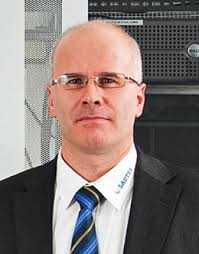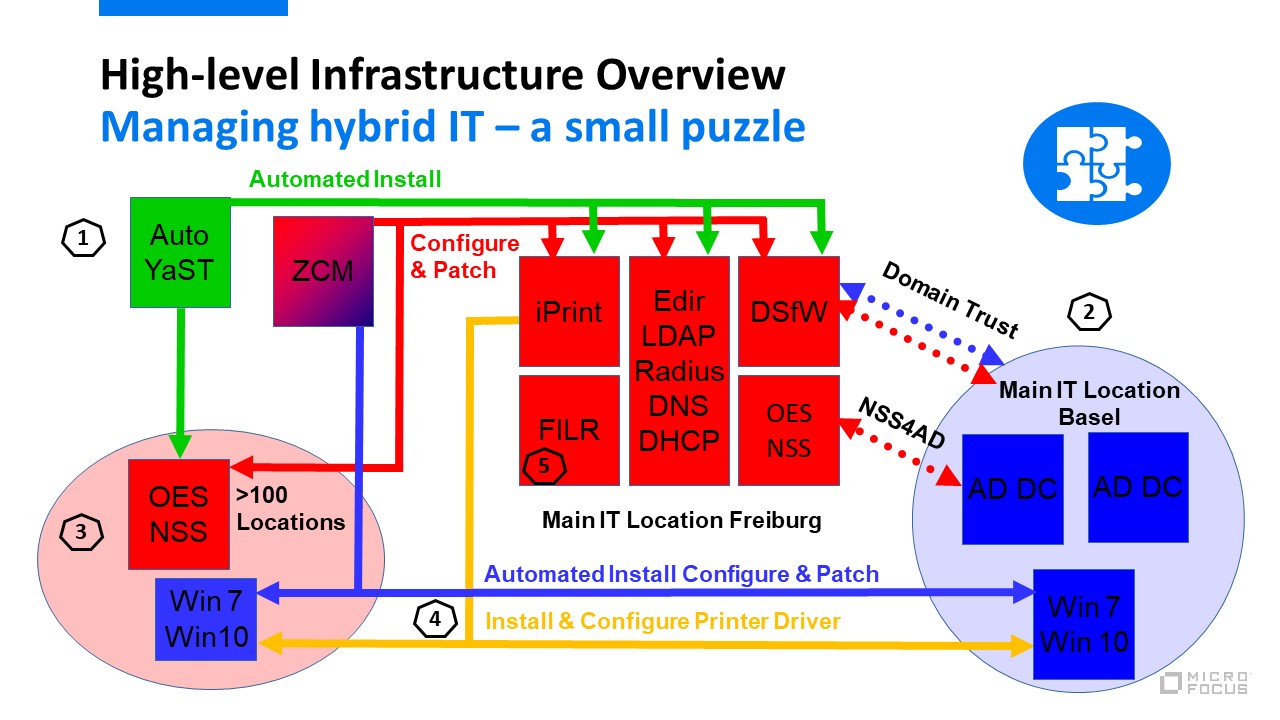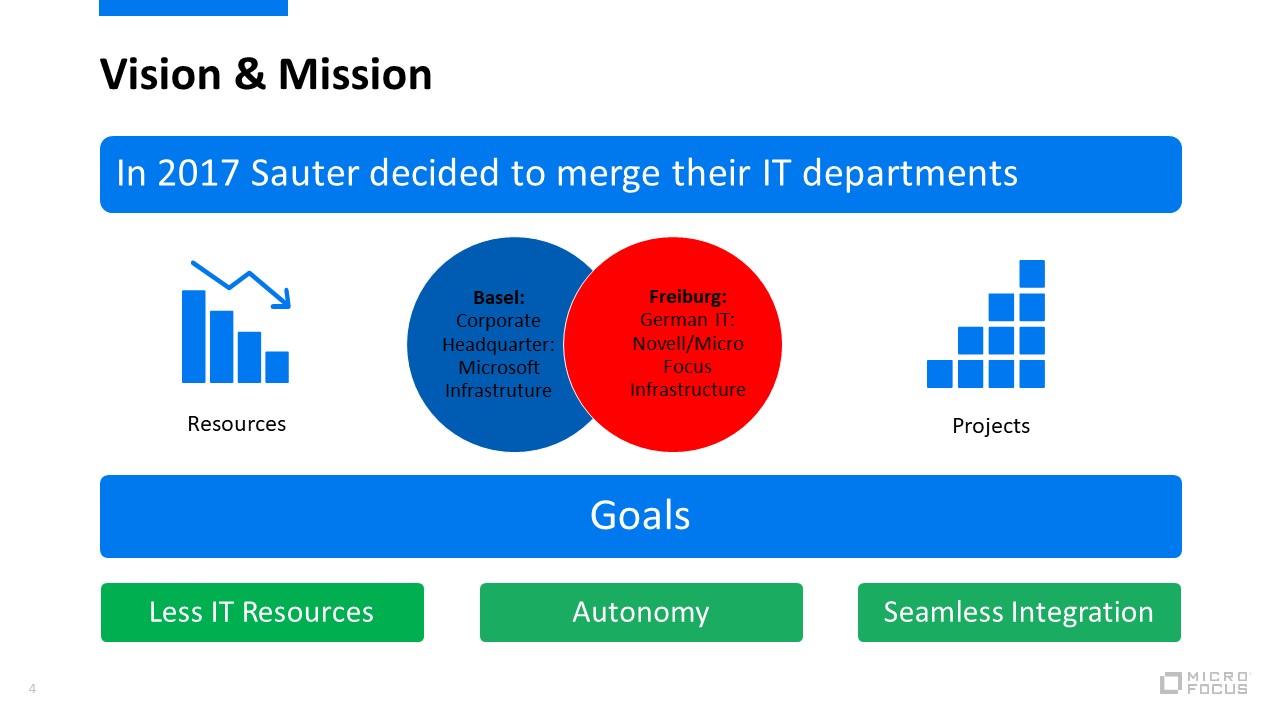This article describes how the Sauter Group, a leader in the building automation sector, have engaged with Micro Focus Professional Services to achieve significant cost savings (up to 50%) through consolidation and process automation across their head office and main locations, by making use of key Micro Focus solutions, such as Open Enterprise Server and the ZENworks Suite.
The company
 SAUTER Group provides products, expertise, and solutions for building management and room automation, covering the entire building life cycle. Following significant growth in recent years it now employs 2,400 people worldwide with a turnover of approximately €400 million, making Sauter one of the leading providers in the building automation industry.
SAUTER Group provides products, expertise, and solutions for building management and room automation, covering the entire building life cycle. Following significant growth in recent years it now employs 2,400 people worldwide with a turnover of approximately €400 million, making Sauter one of the leading providers in the building automation industry.
Challenge
Historically, Sauter was run autonomously, and subsidiaries made their own IT decisions. As a result, Sauter’s headquarters in Basel adopted a Microsoft infrastructure, while the German IT operation, based in Freiburg, has a long history with Micro Focus Open Enterprise Server (OES). Mr Thomas Bitzenhofer, Head of Corporate IT for Sauter, explains the challenge associated with this:

“Users needed access to applications on both infrastructure stacks. Our engineers use complex building control software and access was arranged via VPN, using different credentials. We needed a more efficient and smooth solution for this. The company also realised that centralising our IT operation would be much more cost effective.”
Sauter decided to merge its IT operations to provide seamless integration to all key applications, save IT resources, and create an environment that could be centrally managed.
Both IT environments were reviewed to decide on the new standard. From a hardware perspective, they felt the Linux OES servers are leaner and easier to administer than Windows servers. NSS rights assignment is more granular and simpler within OES than the complex Windows rights assignment. In addition, OES provides print and file services that are regarded as superior to the Windows or open source alternatives.
OES was selected due to its many advantages and features:
- Ease of administration
- OES NSS integrates directly into a Microsoft Active directory using NSS for AD
- NSS rights assignments are more granular and simpler
- With Domain Services for Windows (DsfW) any AD application that requires AD authentication/authorisation can also be integrated. (DSfW has been discussed previously in this magazine by Rohin Gupta - OHM 39, 2018.4, p12-13).
- iPrint used to manage over 500 printers
- Integrated Radius server
- Easy integration of open source products on OES at SOHO locations, e.g. Open Project
- Filr (standard edition) is included
- Integrated DNS and DHCP
- LDAP and Rsync integrated with eDirectory
- OES servers can be used to run a virtualisation environment (e.g. Virtual Box)
Mr Bitzenhofer comments:
“Micro Focus has a proven process with OES and Domain Services for Windows as the foundation to connect eDirectory™ with Active Directory (AD). DSfW is designed to leverage an already established eDirectory environment and authenticate new applications against it. We engaged Micro Focus Professional Services to develop a DSfW concept that integrates the separate systems while achieving our productivity goals. Leveraging this, any application that requires AD connection is integrated and can be transparently accessed by eDirectory users.”
This successful collaboration between Sauter and Micro Focus Professional Services enables users to connect to their required resources, regardless of source system. 2,400 users and workstations in over 100 locations are now centrally managed from Freiburg, Germany.
Although the move was entirely transparent to users on both technology stacks, the Microsoft users soon noticed additional features that are included in OES, such as the convenience of Micro Focus iPrint. iPrint is available for any client and manages over 500 Sauter printers cleanly and reliably. Through a slim IPP client, even Sauter visitors can use iPrint without AD or eDirectory credentials.
In addition, Sauter replaced Seafile, an open source file sharing system that had incurred additional license costs with Micro Focus Filr. Filr provides mobile support and full AD integration for a consistent, secure, accessible experience, whether files are stored and shared from the Microsoft or OES environment.
To encourage team collaboration, Sauter used Microsoft Project. However, in the new consolidated infrastructure, open source products can operate seamlessly on the OES server. The organisation now uses OpenProject, an open source project management system. This has significantly reduced license costs and, unlike Microsoft Project, OpenProject does not require a SharePoint server.
For central management of this hybrid IT infrastructure, Sauter uses ZENworks Configuration Management (ZCM) and ZENworks Patch Management.
“In the Microsoft environment we had separate configuration and patch servers, but ZENworks resides on one server and gives us an integrated solution to manage all our Windows clients and servers, Linux servers, and mobile devices. We use ZENworks to configure and patch Linux servers, deploy software to our Windows 10 clients, patch any 3rd party applications, such as Adobe, and we’ve started a project in one of our divisions to manage Android and Apple mobile devices through ZENworks Mobile Management.”
Results
Process automation and IT consolidation have greatly benefited Sauter, as Mr Bitzenhofer explains:
“Leveraging Micro Focus, we were able to halve our network and system administration resources and a small team of just five people now manage 2,400 users and workstations, in over 100 locations. Apart from the obvious 50 percent cost saving this has delivered, the system is so much more transparent, easier to work with, and more reliable.”
He concludes:
“Our users benefit from additional features and the seamless integration between both IT environments. Our IT teams enjoy the automated and standardized approach to software and patch deployment. The collaboration between Micro Focus and Sauter has saved IT resources while providing central access to key services.”
Technical Details

Figure 1 provides a high level over-view of the new Sauter infrastructure. Some further explanation of additional components is required and provided below. The points reference the diagram above:
- Sauter and Micro Focus Consulting added an AutoYast server to the existing Micro Focus infrastructure components and enhanced the existing ZCM instance, according to the Consulting Best Practices (AutoYaST and ZCM) (https://www.novell.com/documentation/open-enterprise-server-2018/mgmt_bp_guide_lx/data/bookinfo.html). Using this framework Sauter is able to install, configure and patch all OES server the same way. This gives Sauter the control of patch levels and make sure that only needed services are installed and configured.
- The existing AD infrastructure remained untouched. Sauter consolidated the DNS infrastructure and joined the existing AD’s to the DSfW AD. In parallel Sauter joined the OES volumes to the AD by implementing NSS4AD. With both products (DSfW and NSS4AD) in place now users from both infrastructure world can transparently access resources across the worlds.
- AutoYast and ZCM also install, configure and patch all OES servers in the remote locations.
- The existing ZCM instance is also used to install, configure and patch all Windows Workstations. ZCM patch management is also used to patch several 3rd party products like Firefox or Adobe. iPrint is rolled out to manage all printers in both worlds by an easy click and print setup process to connect to printer and provide the preconfigured printer driver
- With the upcoming Filr project Sauter is able to provide enterprise level file sharing for mobile devices as well as with internal or external users with control remaining with Sauter’s IT department.
This project demonstrates the ongoing value of OES, and ZENworks. Micro Focus solutions help businesses achieve digital transformation while saving cost and resources.
This article was first published in OH Magazine, Issue 44, 2019.2, p27-29.



